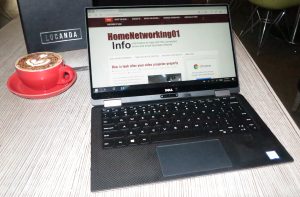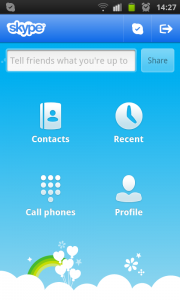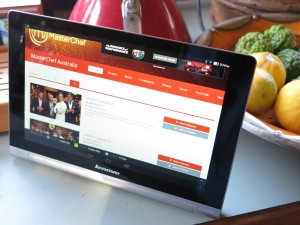The generation gap has its own digital divide
Article

Making the idea of new technologies familiar to the older generation needs to be done at a pace they are comfortable with.
Smartphones creating generational and income divide | ABC News
Broadcast
“Living On The Wrong Side Of The ‘Digital Divide’” – ABC Radio AM (Monday 18 November 2019 8:00am)
– MP3 audio file
My Comments
The recent ABC Australia Talks National Survey looked at a wide range of issues including climate change and social respect. But one of the issues that is relevant to this Website is the issue of the digital divide.
This highlights how pervasive personal computing including use of online services and mobile computing devices like smartphones is amongst certain parts of the community. It also includes the issue of missing out on essential services due to not being able to or comfortable about using them the online way.
As it is often discovered, the digital divide potently affects the older generations but also affects people based on income due to access to the necessary technology. What has never been called out was whether the kind of work people do during their working life had affected their risk of falling victim to the digital divide.
The ubiquity of new technologies through one’s productive life

It has taken a significant amount of time through the 1980s to the 2000s for the computer to be a mainstream tool in one’s productive life
A key factor that I have noticed is how much of one’s school or working life was spent using the technology and how quickly one adapted to newer technologies as they came in to being through their productive life. This is underscored through the evolution of personal computing technology including networked and online computing that took place through the 1980s to the 2000s. As well, the 2000s and 2010s brought about the idea of mobile personal computing thanks to smartphones and tablet computers used both personally and in the workplace.
The workplace
It became more potent in the workplace through the 1990s as computing power moved to the desktop in an affordable form and this brought about the change from the manual office that is based around typewriters, ledger books and card files to the highly-computerised office based around on-site desktop and server computers which handled word-processing, record-keeping and accounting tasks using computer software.
After the Australia Talks show, I had a follow-up conversation with an older man who worked in an office that was facing this transition revealed that his workplace’s accountant took a long time to adapt his accountancy skills to the highly-computerised office. Here, it was about being able to use the computer software to maintain an electronic equivalent of the ledger books.
Let’s not forget that a significant amount of blue-collar or public-facing work didn’t involve the use of computer technology. In some workplaces, specially-employed staff would collect or provide data to the blue-collar or public-facing workers as they needed it. If the worker ran their own business, they would be performing most of the record-keeping for their business the manual way.
The school
The same situation can be underscored through one’s school life before the 1990s where personal computing tended to play second fiddle. This would be about practices like a separate computer-studies lesson that would be taught in a computer lab equipped with personal computers. Other subjects typically required students to present their work in a handwritten form while teachers engaged in “talk and chalk” presentation techniques for most of their classes.
As well, investment in computer education tended to depend upon the whims of the powers that be that oversee the school, whether they be the school board or the government-based or church-based education authority that the school was accountable to. In some cases, it required private enterprise to “chip in” to provide the necessary capital for this kind of study.
After the 1990s, most schools encouraged the use of office software like word-processors, spreadsheets and presentation software as a teaching tool. This is along with the idea of seeing the computer as a tool to facilitate integrated learning and online research.
Being able to adapt to newer technologies
Let’s not forget that different people adapt to the newer technologies at a different pace. It includes whether they will deploy and encourage the use of that new technology to an area that they have oversight of and with what level of enthusiasm. This may be driven by factors including confidence, financial abilities or whether there is much support for that technology.
Some of use may be more keen in implementing newer technologies in our personal and productive lives, such as being “early adopters” of newer technology. Here, they will typically be interested in what new technologies come their way such as through reading journals, magazines and other material on that subject. This is typically said of younger people who tend to adapt very easily to newer social and other trends.
Similarly, some users have demonstrably wanted to adapt to the newer technologies using various methods such as class-based or self-paced training; and / or playing video games based on the new platform in order to make themselves comfortable with it.
Then there are others who will take a slower approach towards handling anything that is new. This may be due to avoiding being stuck with a trend that may be a “rooster one day, feather duster the next”. Similarly, it may be about waiting for the technology to become mature and affordable for most people before they take it up. Some users may even be very skeptical of any new trend that comes along especially if it is pushed on them. This is often said of mature or older people who are more settled in their ways regarding life.
Conclusion
There are many different reasons why there will be a generation-specific digital divide with the core one being about how much exposure they have to newer information technology through their school and working life.
To assist with this digital divide, there will need to be people within their family and community who can help them understand and utilise the various newer technologies that come their way. It can also be through the use of courses and other computer-literacy education tools that are pitched to this generation and its IT needs.


